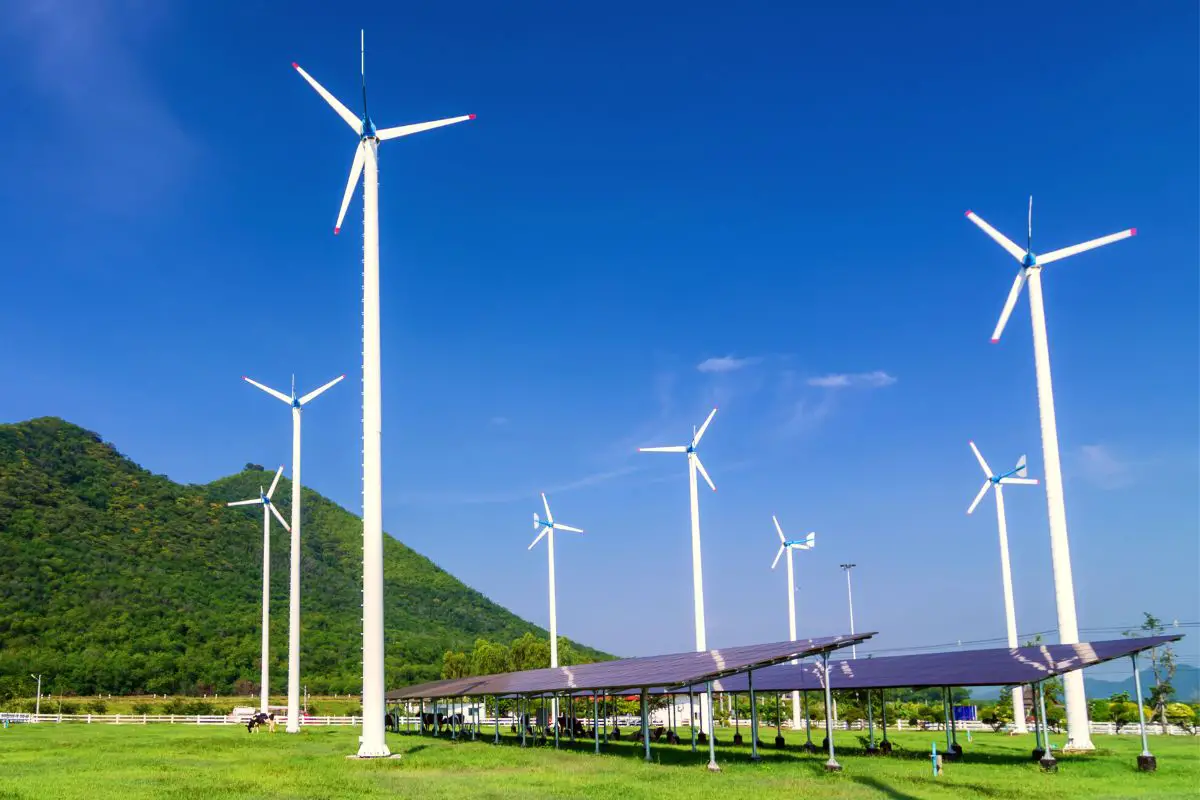Wind Turbine vs Solar Panel for Home: Which One Will You Choose?
The era of renewable energy is upon us. To be honest, the transformation is inevitable.
Even so, setting up a renewable energy system in your home is a big decision and a big investment. Frankly, for a non-techie-minded like me, it’s a challenging task.
I have been looking at solar options such as Sunrun and Tesla solar panels, but a friend of mine suggested that I also looked into wind as a source of energy for our place! I have always associated wind turbines with large open fields, but, well, wind turbine for more standard homes is actually a thing.
Related Article: Do Tesla Use Gas?
So, what’s best – wind or solar – for supplying energy to a house?
Basically, wind and solar are two of the most popular alternatives that you can choose for your home. The good news is, concerns about the environment and about our planet’s health have driven down the costs of both solutions.
That brings us to choosing between wind turbines vs solar panels for home installation.
Here’s a quick answer. If you want a practical and affordable solution for a medium-size home, choose solar panels. In case you have an open windy space and are ready to bear the high upfront costs, a wind turbine can be a more efficient choice for you in the long run.
Time to dig a little deeper.
Solar vs. Wind Power: The History
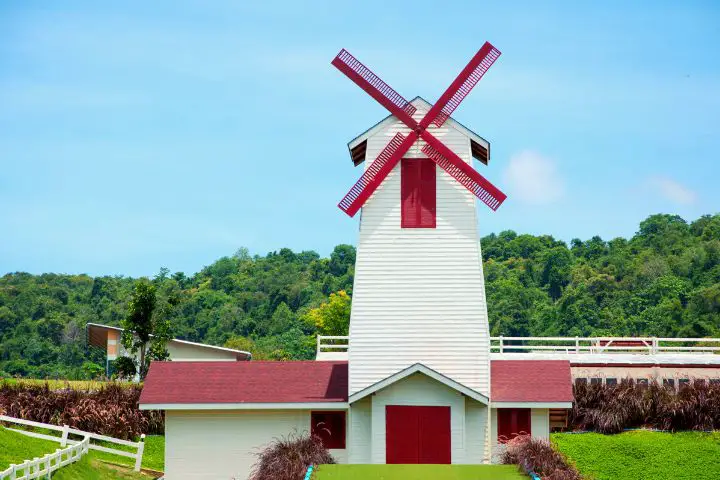
Let’s start with an interesting fact. Wind power was used to propel boats on the Nile in Egypt, as early as 5000 BC.
With time new ways of wind power generation emerged. Windpumps and windmills were common in Asia during the 11th century.
The colonists in America used wind power to grind grains and pump water. Starting from the late 18th century, small wind turbines were used to generate electricity in the United States. With the rural electrification programs in the early 20th century, the number of wind turbines declined.
The focus shifted back to wind energy in the 1980s when oil shortage became an issue. The beginning of the 21st century saw the U.S. federal government offering incentives to encourage the use of renewable energy. Steps were also taken to promote research into wind power generation and bring down the costs.
The history of solar power is not as old but almost equally interesting. Historical records show that human societies used mirrors and sunlight to make fires in the 7th century BC. From using solar power to heat rooms to running solar-powered steamboats, utilizing solar power was a common practice through the ages.
Things changed after the discovery of the photovoltaic effect in 1839. This led to the development of the solar cell in 1883. Subsequently, the first commercial solar heater was patented in 1891. The 1950s saw the development of photovoltaic cells, but their efficiency was as low as 4%.
With technology gathering momentum in the late 19th century, solar energy was used to power satellites. The efficiency of solar panels also increased. In the 21st century, there has been a dramatic rise in the use of solar power for businesses and homeowners.
Wind vs. Solar: A Comparison
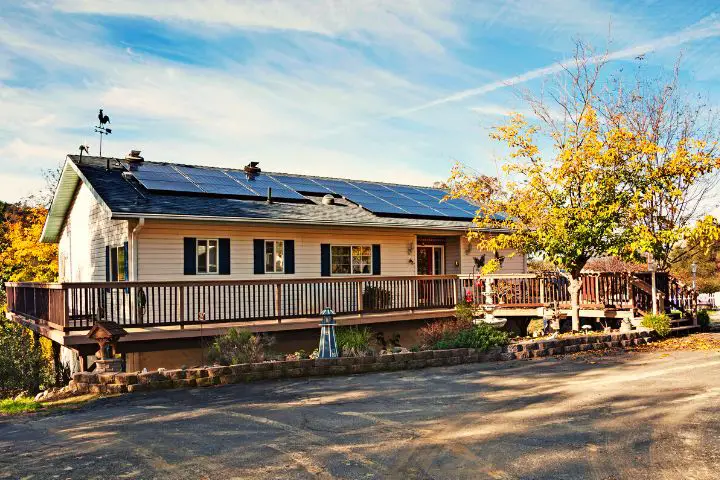
Solar panels installed at your home consist of photovoltaic cells that generate current from sunlight. The direct current (DC) produced is then converted into AC electricity for powering our homes by using an inverter.
Modern solar panels have an efficiency of around 20%. This means 20% of the sunlight falling on the panel gets converted to electricity. On average, the power output of a solar panel is around 265 watts. A typical arrangement can consist of anywhere between 10 to 30 panels.
The big advantage of solar panels is they can be mounted on all rooftops and even on the ground. You can also take support from a community solar program without having to install anything on your roof.
A wind turbine uses wind power to rotate the turbine blades. The generated kinetic energy is converted into AC electricity by a generator. In terms of efficiency, wind turbines are much ahead of solar panels. The efficiency of a turbine can be as high as 40%.
Note, the minimum wind speed needed for these turbines to generate electricity is between 6 and 9 mph. When speeds cross a certain limit, the equipment shuts down automatically for safety.
Wind turbines are available in a wide variety of sizes and configurations. The power generating capacities can vary between 100 kilowatts to 10 megawatts or more. In other words, a single high-capacity wind turbine can generate the same amount of power as that of a few hundred solar panels.
Since wind speeds increase with altitude, turbines are becoming taller to capture more energy. At higher elevations, the wind is also free from obstructions like trees and buildings. Many high-capacity utilities and offshore wind turbines are close to 100 meters (328 feet) in height.
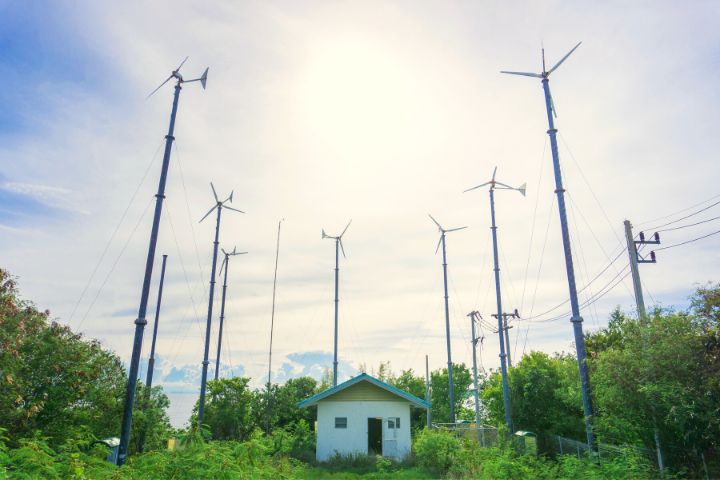
At the same time, the rotor diameter of turbines has also increased in the past decades. A bigger diameter allows the turbines to capture more wind and generate more power. The GE Haliade-X turbine has a rotor diameter of about 107meters (351 feet).
Now that is larger than the length of a football field!
Generally, both solar and wind power setups for homes are grid-tied. That means you retain the connection with the local utility.
So, will a wind turbine produce more energy than solar panels?
Theoretically, the answer is yes. But in reality, it depends on your geographical location.
Consider your location as an area that remains sunny almost the entire year but is sheltered from the wind. In that case, a solar system will deliver more power than a high-efficiency wind turbine.
Wind vs Solar power: Environmental Impact
In reality, the overall carbon footprint of wind and solar power is much less than traditional power generation processes like coal and gas. For example, shifting to solar can reduce your home’s carbon footprint by almost 80%.
But here’s the thing. 100% renewable energy is not 100% carbon-free energy.
The manufacturing of solar panels is not a carbon-neutral process. The fabrication process of the photovoltaic cells requires a number of chemicals and a large supply of water. Moreover, they are not easily recyclable either.
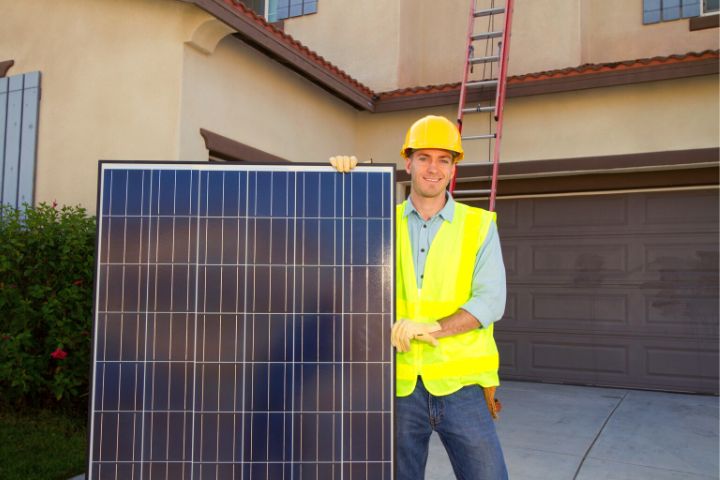
For manufacturing wind turbines, you need materials like steel, concrete, fiberglass, etc. The manufacturing of all these emits a significant amount of carbon. Recycling old turbine blades is not an easy task at all. In reality, most of the old blades end up in landfills.
To be more specific, the average CO2 emission from wind turbines is 11 g/kwh. With solar, it is 44 g/kwh. And with the advancement of technology, these numbers will come down in the future.
But when compared to natural gas (450 g) and coal (1000 g) these are extremely low numbers.
Wind Turbine vs Solar Panel Cost Comparison
The installation of a solar or a wind power generation system will cost money upfront. But in the long-term, they will help you to save money in terms of electricity bills.
However, for home installation, solar is the more economical option.
Cost of Solar Power Systems
The cost of solar system installations has come down dramatically in the past few years. In general, the larger the capacity of the system that you install, the lower the costs.
The monocrystalline solar panels are the most energy-efficient option. The cost of these panels is between $1 to $1.50 per watt.
The cost per watt can be anywhere between $6 and $8. This includes the cost of solar panels, parts, installation, and permits. For a medium-sized home, the total costs can be between $11000 to $15000.

In reality, the cost of a solar power system will vary from state to state in the US. It depends on the local incentives and rebates that you can get.
Other than that, there are also solar lease services where you need not pay the installation cost, but a monthly charge.
Cost of Wind Power Systems
Wind turbines are available in various sizes ranging from smaller 1-kilowatt units to larger 100-kilowatt tower-mounted setups. Unlike solar panels, the cost of wind turbines goes up as you increase the size.
The cost of small wind turbines can be between $3,000 to $5,000 per kilowatt of power generated. Small roof-mounted turbines are cheaper, but they will not generate enough power for your entire home. At best you can use them as a supplemental energy source.
If you are serious about using wind as your prime energy source, you need to install a free-standing wind turbine. Depending on the wind speeds in your region and your monthly power consumption, you will need a turbine with a capacity between 5 to 15 kW.
The overall installation cost of a freestanding turbine with a 3-to 10kW capacity can be around $15,000 to $50,000. This will cover the installation costs, an inverter, and batteries.
Keep in mind, the maintenance costs of turbines are higher than solar panels. They are prone to wind damage and lightning strikes,
Wind Power vs Solar Power: Pros and Cons
As with any power system, both wind and solar power have their pros and cons.
What Are the Pros of Solar Panels?
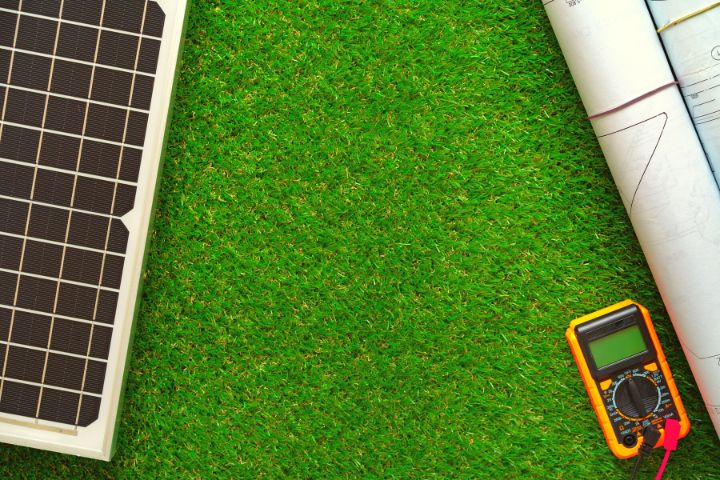
- Solar panels do not require a separate space for installation. They can be installed on roofs or even the balcony and the installation process can be completed within a short period.
- Solar panels have no moving components and are practically maintenance-free. Premium panels can come with a 25-year warranty and can last longer when well maintained.
- Solar panels deliver a more predictable power output as the amount of solar energy in your area is almost constant throughout the year.
- Solar panels are an affordable option for homeowners. In addition, government incentives can bring the upfront costs further down.
- Solar panels are noise-free and are more aesthetically pleasing.
- Solar panels will raise your property value which will ensure a bigger return on the investment.
What Are the Cons of Solar Panels?
- The capacity of the solar panel system you can install is dependent on the available space. Since the panel efficiency is limited, a pretty large space is needed for installation.
- Solar panels will not produce energy during the night.
- The efficiency of solar panels falls as the distance from the equator increases. For example, residents in St. Petersburg or Vancouver will have lower efficiency due to the lower solar energy available. Clouds and foggy conditions will also affect the performance.
- Panels deteriorate with time and lose their power generation capacity at around 0.5% per year. This can vary depending on the environmental conditions and temperature variations.
- Once the solar panels are installed on the roof, making repairs to the underlying surface can be tricky. You may need to disassemble the panels for the necessary repairs.
What Are the Pros of Wind Turbines?

- Wind power can be harnessed any time of the day as long as the wind is blowing at the right speed.
- Wind turbines are more efficient power generators and release less CO2 into the atmosphere than solar panels.
- With advancements in technology, wind turbine installations are no longer an eyesore. The modern designs are more efficient, safer, and need less maintenance.
- They can be installed on pre-existing farmland. Since these turbines have a small footprint, the functioning of the farm is not disrupted.
- The wind sector is showing a rapid growth rate and wind turbine technician is one of the fastest-growing jobs in the American market.
What Are the Cons of Wind Turbines?
- As wind energy is inconsistent, it is hard to predict the exact amount of power that a turbine can generate. Moreover, some locations may not be feasible for a wind turbine installation.
- The initial installation cost of a wind turbine is on the higher side. They will also require more land for installation.
- Some wind turbines can be noisy and since they have moving parts, maintenance requirements can be on the higher side.
- There can be local restrictions on the installation of wind turbines. Make sure to check the local regulations.
- Wind turbines can have a negative impact on local wildlife, especially birds.
Final Thoughts
Time to make a choice between wind or solar power for your home.
Fact is, there is no one-size-fits-all solution. There are two main factors you need to consider before making a decision. Your location and the budget.
In a sunny area, a solar panel is a better choice. If you have an unobstructed space and steady wind flow throughout the year, a wind turbine will deliver more power. But in reality, wind power is more effective as a utility-scale facility.
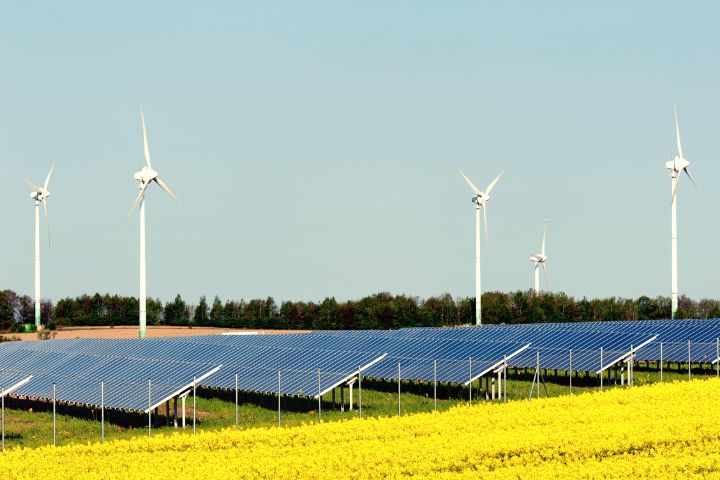
Since solar panels can be easily installed on roofs, they are a more practical choice for urban and suburban locations with space constraints. Besides, they are also the cheaper option and have a shorter payback time for your investment.
To sum up, the higher cost of a wind installation does not make it a financially practical solution for most homeowners. For a cost-effective source of green-energy choosing solar panels is the best option.
Frequently Asked Questions
Is wind renewable or nonrenewable?
Wind power is a renewable source of energy. It does not get depleted when used and is constantly regenerated. Besides, it has fewer environmental impacts when it comes to generating electricity.
Which is better: wind turbines or solar panels?
For urban homeowners who lack space, solar panels are the more affordable option. Solar is also a more predictable source of power than the wind and requires less effort for installation.
How many solar panels would it take to power a house?
That depends on various factors like your annual power consumption, geographical location, panel efficiency, and the rated power of each panel. In general, 20 to 24 solar panels will be needed to meet the power demands of a typical home.

